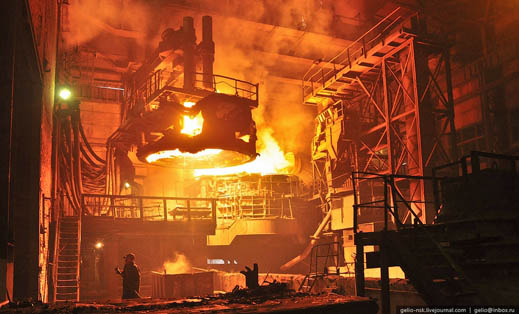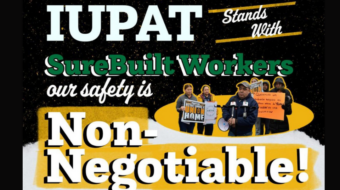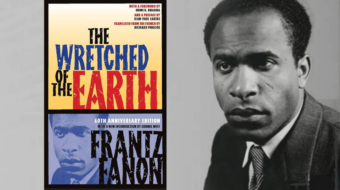
On July 6, 1892, strikers and scabs battled with rifles on the Monongahela River landing outside the Homestead steelworks in Pennsylvania. The scabs, employees of the infamous strike breaking Pinkerton “detective” agency, eventually surrendered, but the Carnegie Steel Company was just beginning. The plant manager, Henry Clay Frick, brought in government forces who subdued the strikers and the townspeople who supported them.
Long months later, the strike was ended and the largest steel plant in America was again running at full capacity. The work was just as dangerous and just as difficult as before, but the pay and benefits were considerably less.
The strikers did everything that they could. The shootout seemed successful at first, as did some of the sabotage and the attempt to poison the scabs; but Frick and the company prevailed. An attempt to assassinate Frick, by a self-proclaimed anarchist named Alexander Berkman, apparently backfired when Frick survived and public sympathy swung toward him.
What was it like to be there? College literature and composition teacher Trilby Busch focuses years of research and a considerable store of family tales to try to answer that question.
Her own great-grandfather was one of the scabs who fell victim to sabotage. Her work gives us a good idea of what people wore, what they ate, and what they might have been thinking about as they went through one of the great historical moments of American labor history.
From the point of view of understanding class struggle, one might wish that Busch had chosen different protagonists to tell her story. Most of the central characters are fairly remote from the fight. They are middle-class people, neither workers in the mill nor management, only tangentially involved. The main character is a university student from Wales who worked only a few weeks in the plant before taking an office job and then going on to take a profession. The other main characters are the town doctor and his beautiful daughter. Even though the fight has a profound emotional effect on them, and they express it well, they don’t take a direct part and the outcome is not a life-or-death matter for them.
There are a number of steelworkers and scabs in the novel, but their motivations and concerns are not very clear. The reader can be grateful to the author, though, for making her own sentiments obvious. She begins the first page with a quote from Mary “Mother Jones” Harris: “…there are no limits to which powers of privilege will not go to keep the workers in slavery.” It was certainly true at Homestead in 1892, and it is a strong lesson for us today.
Book Review
Darkness Visible: A Novel of the 1892 Homestead Strike
By Trilby Busch
2012, Steelworks Press, 520 pages
Photo: A steelworks.









